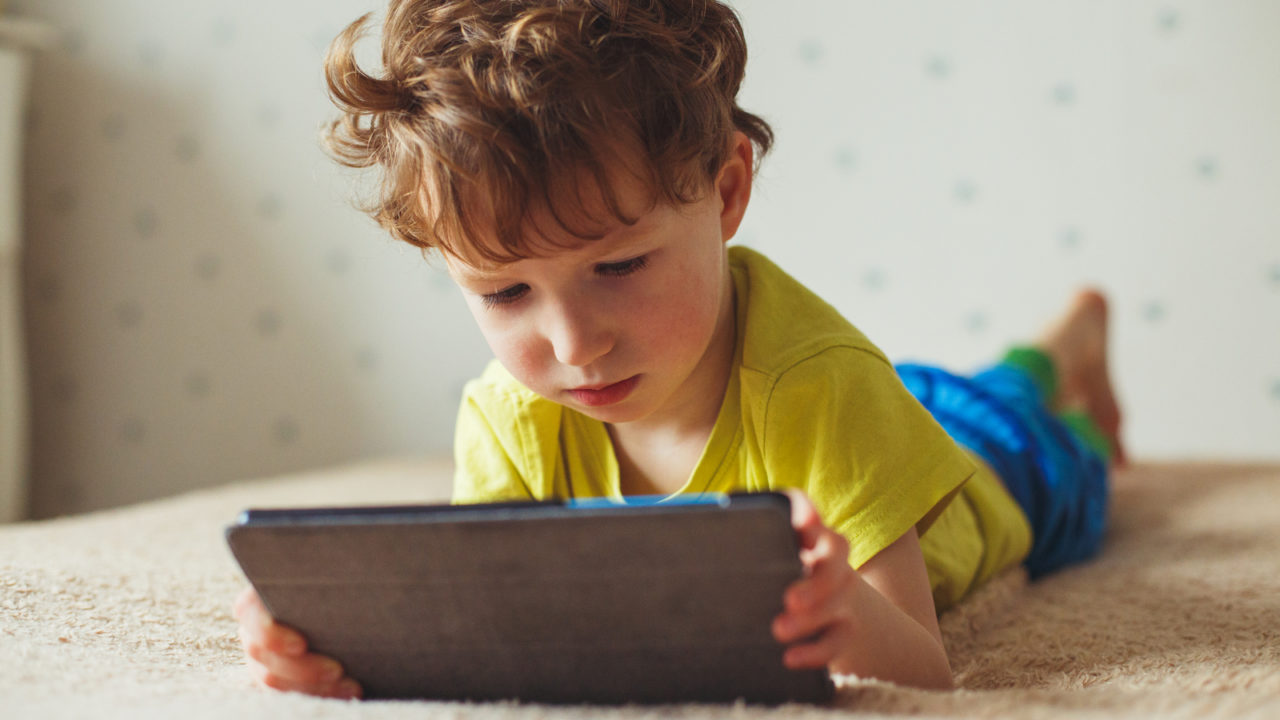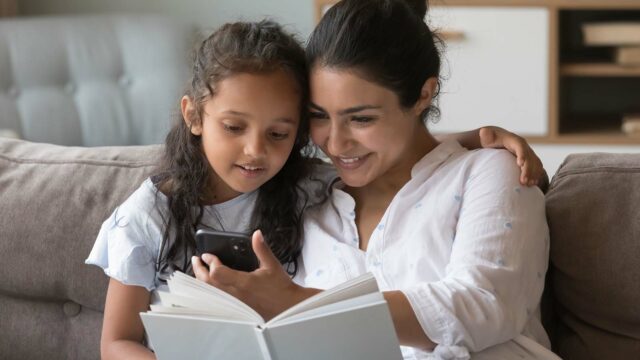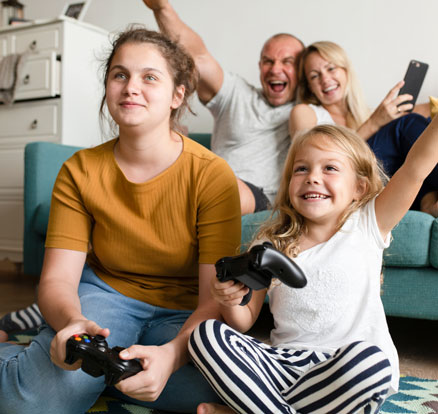
How to deal with children’s screen time?
Some parents worry about both the number of hours and what their children might miss when they pass a lot of time on the screen. Here you will get some good advice and considerations from psychologist Jeanette Sjaaeng.
Choose language in the Google-box below. Some translations may be flawed or inaccurate.
Many children like to spend their time in front of tablets and the TV screen. With a rich selection of apps, games, and various streaming services, the entertainment never ends. On the other side, some parents are worried about their children’s screen use. When will it be too much?

– It is still alien to many adults that the children are sitting online and playing instead of being outdoors with other children. It is thought that a healthy childhood is about the children being out in the street playing, and it becomes difficult when, instead, they are sitting inside on the sofa or in the children’s room in front of the screen, says Jeanette Sjaaeng, who works as a psychologist at the Family House in Nes municipality.
Typical parental concerns may be about what else the kids miss when they spend time on their screens.
– We know that physical activity is important for learning, development, and physical and mental health. If children pass a lot of time in front of the screen, part of this goes away. One may also be concerned that children lack social training when they do not meet face to face. Moreover, it is not just about the screen. There is a difference in what the child gets out of the screen use if, for example, they scroll on social media and feel that they are not good enough, compared to if the child is in full activity with others via the screen in a more positive way, Sjaaeng emphasizes.
Nevertheless, she points out that there are examples of children having excessive screen use. But often the challenge is more complex than the hour alone, and there can be underlying reasons why children lock themselves to the screen.
Laughter or tears?
Instead of only counting hours, Sjaaeng advises parents to familiarize themselves with the child’s experience of using digital media.
– Is this something they enjoy? Do you hear the child laughing and enjoying himself? Then one can assume that the screen usage is positive for the children. Is it more characterized by pastimes and impulses that cause the children to become upset or aggressive? Or that it goes beyond the self-esteem of the children? Then you can talk about negative screen use, thinks Sjaaeng.
At the same time, she points out that there is a lot of positive things going on on the screen that contribute to creativity, collaboration, and problem-solving. In other words, there can be a lot of nice cognitive development even if the children are sitting on their mobile phones.
– We know how indispensable technology has been during the corona period. It has been positive for children to have contact with friends when they have not been able to be physically together. The screen may also contribute to family cohesion if you play a game or watch movies together. It develops abilities, creates engagement and joy with such positive circumstances, says Sjaaeng.
Does that mean you shouldn’t be skeptical?
Sjaaeng points out that all through the ages generations of parents and children have always had some kind of distinction that creates uncertainty.
– In the past, there have been concerns about the music the young people listened to or the books they read. There has always been something that the generation of children and adolescents has been doing and that the adults have thought is not quite good. Historically, however, things have gone smoothly. So, we, the adults, need to acknowledge that the screens are here to stay. At the same time, you have to set good limits and boundaries on how much is okay to spend in your own family and make sure that the children are safe in their media use, Sjaaeng points out.
She also dampens her concern that children won’t get the social contact they need when they are using screens.
– It is the case that most children are in school in everyday life, participate in leisure activities and in other ways interact with others. So, they get face-to-face social training in such contexts. While online, they also learn to communicate with others even if it is in a different way. You may still lose non-verbal communication, and when you don’t have someone in front of you in the same room, it can be easier to step over each other’s boundaries. Children and young people are not fully developed in familiarizing themselves with other people’s experiences and reactions. Therefore, they rely on adult guidance. Here, too, children can get social training with the help of the adults in learning about language use and what to write or not write online, according to Sjaaeng.
Let your kids influence the screen rules
Creating good screen rules is an individual need for each family. It is challenging, but it is about finding a good balance, explains Sjaaeng.
– It is important that the use of the screen does not become immersive. One must help the children to regulate the screen in relation to other tasks and errands that time should go to. And if you can get coordination with other parents, so that your children’s friends log off from the internet at the same time, it is also easier to turn off the screen. Not least, you can then delimit the screen so that it does not compromise your night sleep. If not, it may interfere with sleep patterns and lead to sleep difficulties in children and adolescents, according to Sjaaeng.
She also encourages parents to include the children in the process when making house rules.
– The children know this world best and know about their own needs, such as how long a game lasts. By allowing the children to participate in the decision-making process, they also practice setting boundaries for themselves. They find that their point of view is taken seriously, and perhaps it will be easier for the children to comply with limits if they are allowed to think something about the framework that is set, says Sjaaeng.
Screen-conscious, not screen-passive
Sjaaeng points out that some dangers have emerged with the technology and that was not as prevalent in the digital world in the past.
– As adults, we need to make sure that the children are safe. We need to know something about what the child is watching and playing, and whether it’s age-appropriate. We must also have an overview of who the children are in contact with, as well as their language and behavior online. According to Sjaaeng, this requires an adult follow-up from us in the same way as when the children participate in other activities.
She also encourages parents to help their children have varied lives where screens can be one of several activities.
– Variety is the keyword here, and it’s important that children’s free time is filled with things other than just screens. In addition, the screen should not be the babysitter. The needs of the parents should not determine whether the screen should be used or not. And the younger the children, the more vigilant the parents must be. Then one must also remember that this field of interest has come to stay. If you have too strict rules, it may lead to exclusion for the child, and conversely, if you are too lax, it may lead to injury. It is about finding a balance, and the decisions should be reasonable with the time the children grow up in and the social circle of the children,» concludes Sjaaeng.
All photos: Shutterstock / Ternavskaia Olga Alibec
Read more:
Advice on screen use and sleep
Are you new in Norway? Tips on children’s media use
(Published in Norwegian on 30.11.2021 and translated by Ratan Samadder)










